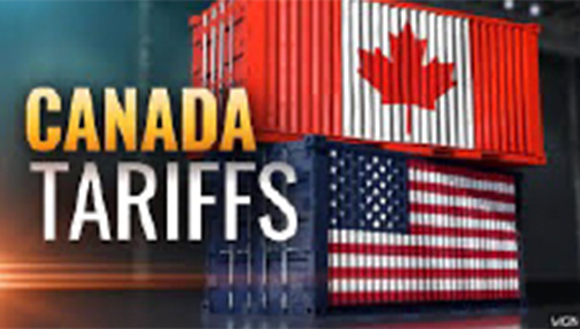U.S. and China agree to slash most tariffs for 90 Days
US and Chinese officials have reached a deal to roll back most of their recent tariffs and call a 90-day truce in their trade war for more talks on resolving their trade disputes. The US agreed to drop its 145% tariff rate on Chinese goods by 115 percentage points to 30%, while China agreed to lower its rate on U.S. goods by the same amount to 10%. The agreement was announced at a news conference in Geneva.
Trump expressed confidence that a deal would be struck within 90 days, as tariffs would “go up substantially higher,” though not to 145%, if a comprehensive deal isn’t reached within that timeframe. The reduced tariff rates didn’t apply to tariffs on autos, steel, aluminum, or the potentially upcoming import taxes on pharmaceutical drugs.
China’s Commerce Ministry said the two sides agreed to cancel 91% in tariffs on each other’s goods and suspend another 24% in tariffs for 90 days, bringing the total reduction to 115 percentage points. The Ministry called the agreement an important step for the resolution of the two countries’ differences and said it lays the foundation for further cooperation. It hopes the U.S. will stop “the erroneous practice of unilateral tariff hikes.”
Jens Eskelund, president of the European Union Chamber of Commerce in China, welcomed the news but expressed caution. The tariffs only were suspended for 90 days, and there is great uncertainty over what lies ahead. Businesses need predictability to maintain normal operations and make investment decisions.
Source: Globe and Mail
Source: CBC
Source: Reuters
Is CUSMA the Best Path Out of the Trade War With the U.S.?
Business leaders were hopeful that the White House meeting between Prime Minister Mark Carney and US President Donald Trump would provide a framework for how trade talks may progress. After their conversation, an unlikely winner appears to be emerging: the Canada-U.S.-Mexico Agreement on trade (CUSMA, or USMCA) as it’s called in the United States. Trump was asked if USMCA is dead, and he said that it was actually very effective and still very effective. However, people have to follow it. Trump later mused that the trade deal was a transitional step that may not be needed in the future. But his embrace of the agreement might be just enough to reset the parameters of the Canada-U.S. trade talks.
Goldy Hyder, president of the Business Council of Canada, believes that the president has opened a wide open door and they need to drive through it. He says that going through the process of making sure most Canadian products are actually compliant under the new deal, as opposed to old deals, will help assuage some of the concerns from the White House. Framing the dispute through CUSMA also serves to contain some of the volatility associated with the tariffs and threats emanating from the White House.
One problem so far has been the sprawling nature of the president’s complaints. Trump has railed against everything from autos and steel to energy and making Canada the 51st state. The issues were so big and so varied, it was hard to see how the dispute may end. Longtime veterans of Canada-U.S. trade didn’t expect Trump to emerge from the meeting with Carney as the defender of the trade deal.
Businesses and business associations have repeatedly told the politicians to find a way to get talks moving. The uncertainty caused by the tariffs is weighing on business investment in both countries, and the tariffs themselves are hurting businesses across the continent. At first blush, business associations seemed optimistic after the meeting at the White House. The Canadian Chamber of Commerce said a relationship reset was much needed, and President and CEO Candace Laing said that their two countries working and making things together will be mutually beneficial for decades to come.
The question is how to get negotiations actually moving. Carney agreed to have further conversations in the coming weeks and is looking forward to meeting in person at the G7 Summit in Kananaskis in Alberta.
Source: CBC
Canada’s Trade Deficit Narrows to $506M in March, Driven by Slump in U.S. Imports
Canada’s trade deficit narrowed to $506 million in March, beating expectations as imports fell at a faster rate than the drop in exports. Imports of goods dropped 1.5% in March, driven by a 2.9% slump in imports from the U.S. after Canada imposed retaliatory tariffs on its neighbour, following President Donald Trump’s 25% tariff on Canadian steel and aluminum from March 12.
Exports to the U.S. also dropped by 6.6% but were almost compensated by an increase in exports to the rest of the world, according to Statistics Canada. Analysts polled by Reuters had estimated the total trade deficit would widen to $1.56 billion in March, up from a revised $1.41 billion in February.
Trump’s tariff threats had pushed Canadian firms to advance supplies south of the border, boosting trade surpluses in December and January. However, as the tariffs took hold, shipments to the U.S. have been squeezed.
Canada’s overall exports for March sat at $69.9 billion, down from $70.04 billion in February, led by the U.S. This was the second month in a row where exports fell. In volume terms, exports were up 1.8% in March, but imports fell in both value and volume terms for the first time in five months, with the largest contributors being metal and non-metallic mineral products (by 15.8%) and energy products (by 18.8%).
Source: CBC











